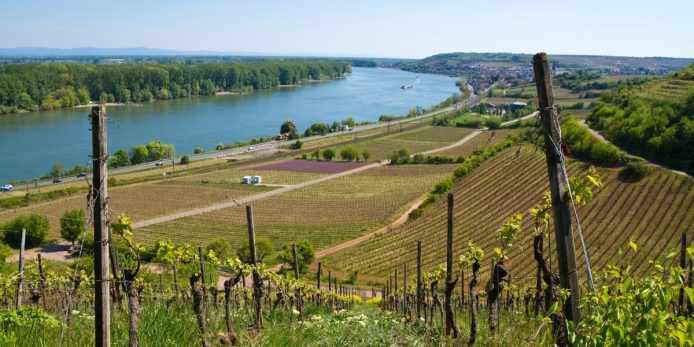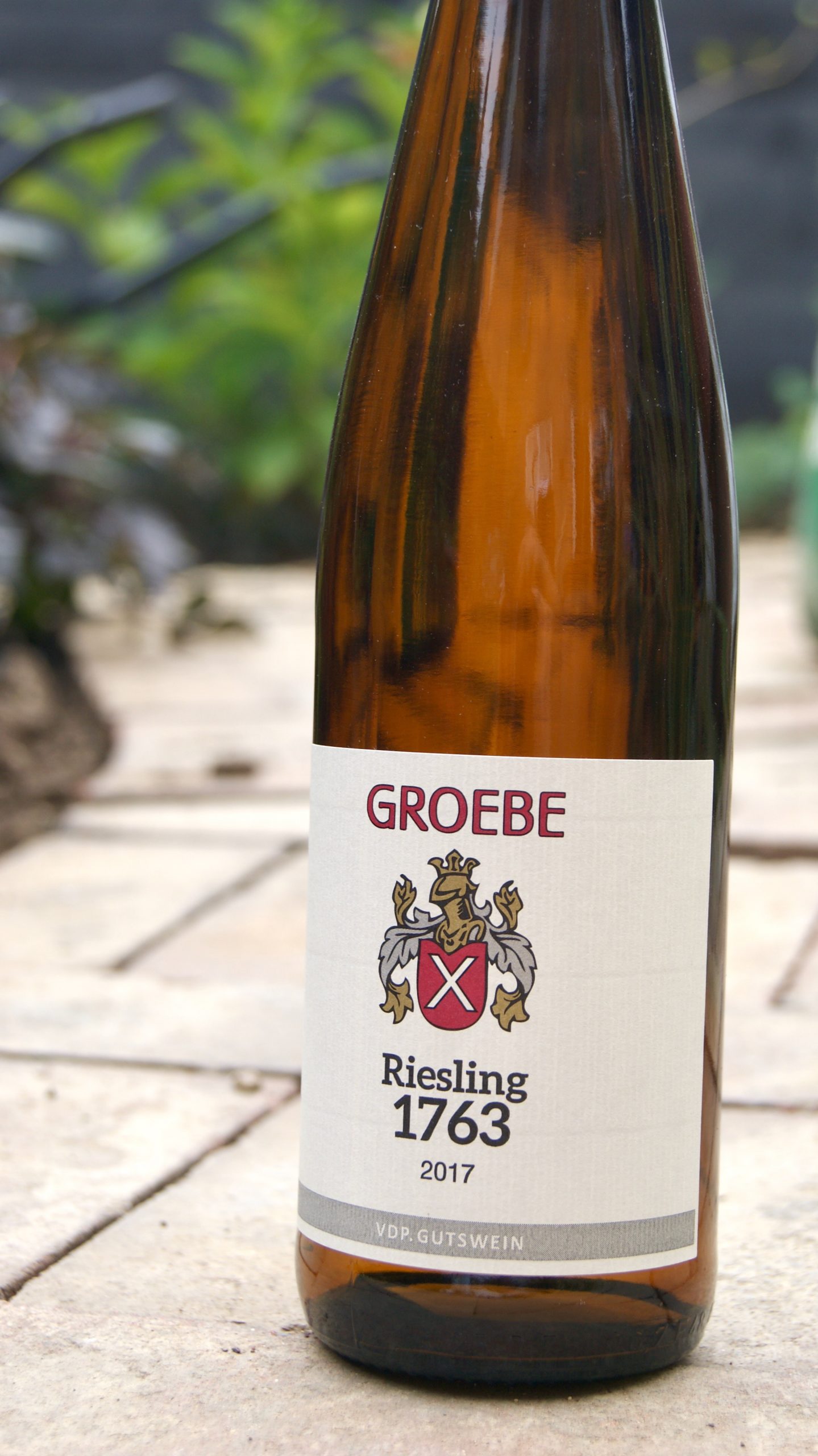Your Mini Basket

A New Era for German Wine
This month's guest post comes from a trade insider and friend of the business. No, you can't know...
This month's guest post comes from a trade insider and friend of the business. No, you can't know who they are.
Ask anyone to sum up what ‘German-made’ means to them and the words ‘quality’, ‘reliability’ and ‘precision’ will likely be among those offered. Adjectives that can unequivocally be applied to their wines, but it hasn’t always been so.
As a child of the seventies, I was fortunate to grow up through a period of seismic change; notable highlights included progressing from three black and white tv channels to four in colour, and from being fed Smash and Angel Delight in the 70’s to frozen pizzas and Viennetta in the 80’s. I would also go so far as to say I was ‘privileged’ to be given a small glass of either Blue Nun, Piesporter Michelsberg or Niersteiner Gutes Domtal with my Sunday roast courtesy of my ‘à la mode’ parents.
Whilst my sweet tooth made this little treat all the more savoury, I had no idea that around the turn of the 20th century, the now ubiquitous names of Niersteiner, Piesporter and Liebfraumilch were highly revered by wine connoisseurs the world over. A few years ago, I was shown an old ledger from the famous London wine merchants Berry Bros & Rudd dating back to the early 1900’s, it showed single vineyard wines from Niersteiner and other Rheinhessen villages fetching higher sums than Bordeaux’s first growth Chateaux!
Law & Order!
Fast forward to 1971 when the German wine laws were reformed, essentially reclassifying wines according to their sugar levels and reorganising vineyards in order to streamline and simplify wine labels, and almost overnight the once great names became diluted in a sea of mass-produced mediocrity which would take more than a generation to redress. Sadly, for those of us above the age of forty-five, the stigma largely lives on but for those below this age, there has been a greater willingness, not only to taste but to enjoy Germany’s wonderfully expressive wines without prejudice.
Dry Yourself Off
 In recent years, the availability of Germany’s drier or ‘trocken’ wines in the UK has improved considerably, fuelled primarily by the popularisation of casual and fine dining. We’ve finally discovered what the Germans have known all along, that their dry wines are not only perfect for enjoying with food but they arguably represent the best quality too. No grape variety demonstrates this better than Riesling (pronounced reez-ling for the avoidance of doubt). In the largest of the 13 German wine regions, the Rheinhessen, traditionally responsible for much of the aforementioned mass-produced names, you will find the historic estate of Weingut K.F Groebe.
In recent years, the availability of Germany’s drier or ‘trocken’ wines in the UK has improved considerably, fuelled primarily by the popularisation of casual and fine dining. We’ve finally discovered what the Germans have known all along, that their dry wines are not only perfect for enjoying with food but they arguably represent the best quality too. No grape variety demonstrates this better than Riesling (pronounced reez-ling for the avoidance of doubt). In the largest of the 13 German wine regions, the Rheinhessen, traditionally responsible for much of the aforementioned mass-produced names, you will find the historic estate of Weingut K.F Groebe.
 Situated in the little village of Westhofen since 1763, the estate is today headed by Friedrich Groebe. As the current custodian, he has added his own flair without losing sight of the all-important, core traditional values that in turn marks them out as one of the region’s top estates. They’re one of just 196 members of the illustrious VDP (Verband Deutscher Prädikatsweingüter), which is a membership organisation that promotes the country’s leading wines and estates. Groebe’s Riesling ‘1763’ (£22.99) is the perfect introduction to this drier style with its almost crunchy acidity tempered by just enough residual sweetness as to make it mouth-wateringly delicious! As the wine takes on further bottle age, the delicate lime blossom and orchard fruit notes develop in complexity and add weight while the acidity keeps it all lively and refreshing.
Situated in the little village of Westhofen since 1763, the estate is today headed by Friedrich Groebe. As the current custodian, he has added his own flair without losing sight of the all-important, core traditional values that in turn marks them out as one of the region’s top estates. They’re one of just 196 members of the illustrious VDP (Verband Deutscher Prädikatsweingüter), which is a membership organisation that promotes the country’s leading wines and estates. Groebe’s Riesling ‘1763’ (£22.99) is the perfect introduction to this drier style with its almost crunchy acidity tempered by just enough residual sweetness as to make it mouth-wateringly delicious! As the wine takes on further bottle age, the delicate lime blossom and orchard fruit notes develop in complexity and add weight while the acidity keeps it all lively and refreshing.
To experience the very best of Germany’s dry wines, one must look for the term ‘Grosses Gewächs’, roughly equivalent to the French term ‘Grand Cru’. These are not governed by German wine law but rather determined by the VDP and can only come from the very best individual vineyard sites or ‘Grosse Lage’. Groebe’s Aulerde (£48.99) vineyard is classified as Grosses Gewächs or simply GG and is an outstanding example of Riesling with precision, depth and power that is a pleasure to drink in its youth but will certainly reward those with the patience to wait for 5, 10 even 15 years.
Red?? Germany??
It’s not just Riesling though that offers innate drinkability. The Burgundian clones of Pinot Blanc, Pinot Gris and the red Pinot Noir are being fashioned into everything from decent, honest every day drinking wines to serious, world class fine wines as in the case of Spätburgunder (Pinot Noir). From a decent grower like Weingut Aldinger in Württemberg near Stuttgart, you can find Pinot Noir that tastes and feels a little like a reliable southern Burgundy but at a fraction of the price. Take the VDP Gutswein Trocken (£17.99). This is an elegantly structured wine with velvety tannins and subtle wood notes to compliment the wild berries and herbal nuances.
However, if you want to try something a little more regionally distinctive but equally delicious, try Lemberger (aka Blaufränkisch) which has been growing steadily in Württemberg over the past 50 years. Aldinger’s Lemberger VDP Gutswein Trocken (£17.99) is deeply coloured and packed with juicy blackberry and cassis flavours, smooth tannins and a highly pleasant mouthfeel. The perfect match with smoked or grilled cheese and lightly salted vegetables. Think roasted vegetable quiche with gruyère.
Go Forth & Drink
Although we’ve barely touched on two of the thirteen wine regions of Germany, there is so much more to discover from the racy Rieslings of the dramatically steep slopes of the Mosel and Nahe valleys in the west to the earthier, weightier whites and reds from the wooded slopes of Franken to the East and from the powerfully structured Spätburgunders of the tiny region of the Ahr valley in the north to the richer, generous white and red Pinot’s of the endless rolling hills of Baden to the south.
So, maybe it’s now time to let go of those preconceptions and prejudices and discover Germany’s vinous delights!
